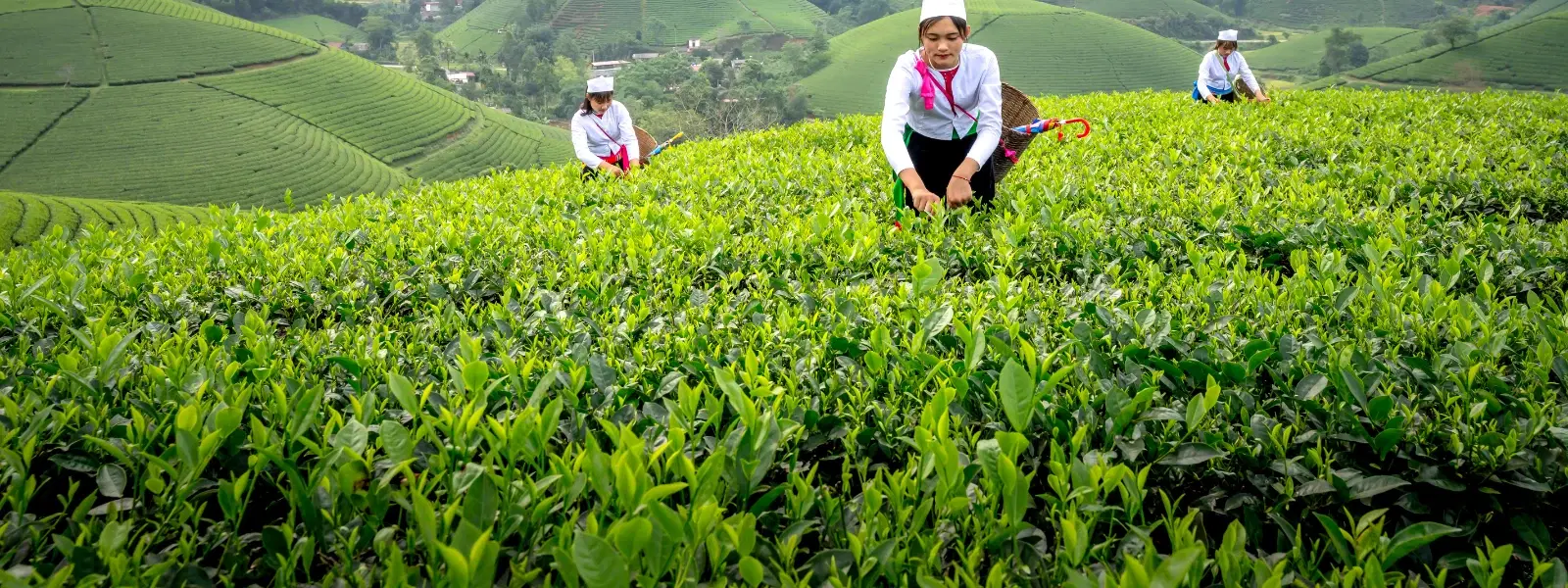
Flights
•04 min read

Imagine stepping into a world where lush, rolling hills cradle endless tea gardens, and the gentle rustle of leaves accompanies your every step. Darjeeling, famous worldwide for its exquisite tea and breathtaking landscapes, offers an immersive experience that blends rich heritage, culture, and nature. This guide is designed to help you explore the best tea estates in Darjeeling, offering practical tips on garden tours, stays, and uncovering the unique legacy of Darjeeling tea.
The origins of Darjeeling tea date back to the British colonial era when tea plantations were first introduced to these steep slopes. Over the decades, Darjeeling tea has carved its niche in global tea culture, celebrated for its delicate flavors and aromatic notes. Notable milestones in Darjeeling tea production include advancements in tea processing and the eventual recognition of its unique quality, which has cemented its position on the world's tea map.
The secret behind the distinct flavor of Darjeeling tea lies in its geography. The region's cool climate, abundant rainfall, and well-drained soil converge to produce tea with a musky-sweet tone and subtle floral aroma. Known as the "Champagne of Teas," Darjeeling tea benefits from its GI (Geographical Indication) status, ensuring that only tea grown in these regions can carry its prestigious name. This heritage is not just about taste—it reflects a deep connection between the land and its people.
Certain estates in Darjeeling have become legendary. Among these, Makaibari is celebrated for its pioneering spirit and historical significance, while Happy Valley and Puttabong charm visitors with their organic methods and scenic vistas. Each estate weaves a unique story that combines tradition with innovation, offering a glimpse into the meticulous process of tea cultivation.
An organized tea garden tour is a memorable way to experience these estates. Imagine guided walks through perfectly manicured gardens, engaging tea-tasting sessions, and visits to processing units where centuries-old methods meet modern techniques. Some estates require prior booking or an entrance fee, so it's wise to do a little research before you set off.
For a truly immersive experience, consider staying at a tea estate. Waking up to the fresh aroma of brewing tea and panoramic views of undulating tea gardens elevates the journey. The accommodation options are designed to make you feel at home amidst nature, letting you absorb local hospitality and savor the beauty of daily life in the plantations.

The best time to set out for tea estates in Darjeeling is during the tea plucking seasons, when the gardens burst into life with fresh, vibrant leaves. Early spring, when the first flush is harvested, is ideal for those wanting to taste tea at its peak. Weather plays a significant role, with cooler, misty mornings enhancing the sensory experience of a garden tour.
Getting to Darjeeling is an adventure in itself. Whether you choose to fly into major airports or take a scenic train journey, the region is accessible via Kolkata and Siliguri. Road travel is also an option, offering the chance to catch glimpses of the countryside along the way. This ease of connectivity makes planning a visit both practical and rewarding.
When visiting tea plantations, dress comfortably and be prepared for varying weather conditions. Booking tours in advance can save you time, and a respectful attitude towards the local customs goes a long way. Engaging with the workers and learning about their daily routines enriches your travel experience and deepens your understanding of the tea-making process.
Tea is not just a beverage in Darjeeling—it’s a way of life. The industry supports local communities by creating jobs and fostering a network of small businesses. The economic impact is profound, with tea production laying the foundation for sustainable livelihoods in the region. Visitors can feel this vibrancy in every interaction and every sip of tea.
Tea tourism offers a unique chance to connect with the soul of Darjeeling. As you wander through the estates, you’ll engage with tea workers, sample traditional meals, and possibly catch local festivals celebrating the art of tea. These experiences are a testament to the cultural depth that accompanies every cup of Darjeeling tea, making it much more than just a drink.
No visit to Darjeeling would be complete without taking home some of its prized teas. Whether it’s the fragrant first flush, the robust second flush, or the subtle autumnal teas, make sure you purchase from trusted sources to ensure authenticity. These souvenirs are not only delicious but also a tactile reminder of your journey.
While well-known estates attract most of the attention, there are several hidden gems waiting to be explored. Estates like Risheehat and Chamong offer travelers off-the-beaten-path experiences, where tranquility and breathtaking views are guaranteed. Embrace the adventure of discovering these lesser-known spots that add an element of surprise to your journey.

Did You Know? The first flush of Darjeeling tea, harvested in spring, is considered the most prized for its delicate flavor and floral aroma. Be sure to try it during your visit!
There are over 80 tea estates in Darjeeling, each contributing to the region’s renowned tea production.
The Makaibari Tea Estate, established in 1859, is considered the oldest tea estate in Darjeeling.
While opinions vary, Glenburn Tea Estate and Makaibari Tea Estate are often regarded as top contenders for their quality and heritage.
Darjeeling tea is famous for its unique flavor profile, often described as musky-sweet with floral undertones, earning it the nickname "Champagne of Teas."
Yes, many tea estates offer luxurious stays where visitors can immerse themselves in the tea garden experience.
Exploring tea estates in Darjeeling offers an unforgettable journey into a world where nature, culture, and history intertwine. From learning about the colonial past and unique tea heritage to experiencing serene tours and engaging with local communities, every moment enriches your appreciation of Darjeeling tea. Whether you are a wanderer, a planner, a professional, or a luxury seeker, the tea gardens of Darjeeling await to share their secrets with you.